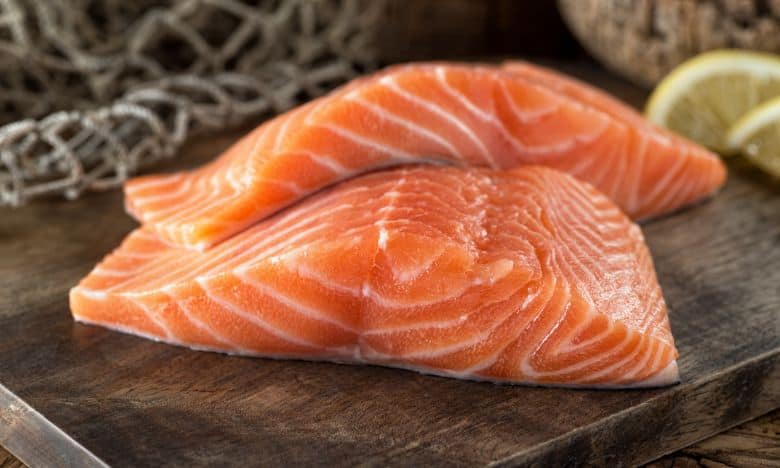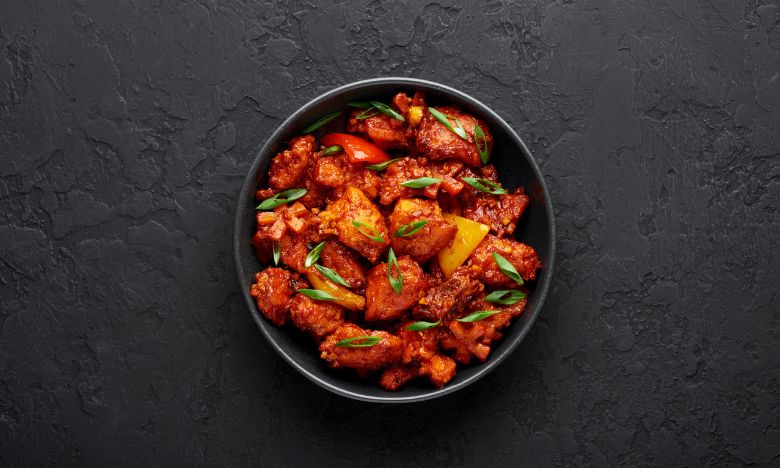We love these Salmon Burnt Ends because they capture everything we love about BBQ – the smokiness, the sweet and savory glaze, and the melt-in-your-mouth tenderness. They’re like bite-sized morsels of heaven that have been kissed by smoke and glazed with a symphony of flavors.
This recipe takes the humble salmon and transforms it into something truly extraordinary. But don’t worry if you’re not a seasoned pitmaster just yet. This recipe is beginner-friendly, with clear step-by-step instructions.
While it may seem a little intimidating at first, I promise you, it’s simpler than you think. The key is patience and allowing the smoker to do its magic. It’s a wonderful way to dip your toes into the world of smoking and BBQ.
We’re sure that these Salmon Burnt Ends will be a recipe you’ll come back to time and again. So, let’s fire up that smoker and get started on this delicious journey!
What is a Burnt End?
Traditional burnt ends hail from the barbecue capital, Kansas City. They’re the point end of a smoked brisket that’s been cut into bite-sized pieces and given some extra love with a second round of seasoning and smoking.
This process renders the fat and crisps up the bark, turning those pieces into melt-in-your-mouth, caramelized chunks of beef with amazing smoke flavor. And let me tell you, they are absolutely delicious!
However, the world of burnt ends doesn’t stop at beef. Oh no, the term ‘burnt ends’ has evolved to encapsulate a whole world of double-smoked, caramelized deliciousness. You’ll find a variety of burnt ends recipes that put a spin on the traditional version. You can find pork belly burnt ends, chicken burnt ends, and even hot dog burnt ends!
And then there’s our unique seafood spin on burnt ends – Salmon Burnt Ends! They might be a bit different from traditional burnt ends, but these little nuggets of salmon still deliver big on flavor. The salmon is smoked, cubed, and then coated with a sweet and savory glaze to create a smoky, flavor-packed, bite-sized piece of heaven for the ultimate side dish cuisine.
Each version has its own charm, but they all share the same principle: turning overlooked cuts into something extraordinary. And that, friends, is the beauty of barbecue.
Selecting the Perfect Salmon

When shopping for your fresh salmon, remember that the quality of your ingredients plays a big role in the final flavor of your dish. Always go for the freshest option you can find. The fish should have a vibrant color, firm flesh, and a clean smell.
Now, what kind of salmon should you choose? Two types that work particularly well for this recipe are Atlantic salmon and King salmon. These varieties are often more fatty, which means they’ll stay moist during the smoking process, and they’ll absorb those delicious smoky flavors beautifully.
Speaking of fat, look for a fatty fillet. Those white stripes in the salmon? That’s fat, and in the world of smoked salmon, fat equals flavor and moisture. So, don’t shy away from a fatty piece – it’ll give you juicier and more flavorful burnt ends!
Next, you’ll want to make sure your salmon is skin removed. The skin can get quite tough when smoked, and removing it allows the flavors of the cure and smoke to penetrate the fish better.
Finally, don’t forget to remove pin bones from the fillet. These tiny bones can be a nuisance when eating, but they’re easy to remove. You can feel for them by running your fingers over the flesh of the salmon, and you can pluck them out with a pair of tweezers.
Remember, the better the salmon you start with, the better your burnt ends will be.
How To Make Salmon Burnt Ends – Step By Step Guide
Preparing the Salmon
Seasoning the Salmon
Curing the Salmon
Rinsing the Salmon
Drying the Salmon
Prepping the Smoker
Smoking the Salmon
Making the Glaze
Glazing the Salmon
Finishing the Salmon
Cooling and Garnishing
Smoking Salmon Burnt Ends: Techniques and Tips
Here are some helpful tips for those of you who are new to making Salmon Burnt Ends. Don’t worry, with these tips in your back pocket, you’ll be turning out smoky, delicious salmon bites like a pro.
So, let’s get started!
- Choosing Wood: Opt for fruitwood pellets or wood chips such as apple or cherry. These light wood varieties are milder and pair well with salmon, providing a gentle smoky flavor that doesn’t overpower the fish.
- Curing Time: While you can cure the salmon for as little as 4 hours, leaving it overnight (around 12-24 hours) in the fridge will give you a deeper flavor. Make sure to mix it every few hours for an even cure!
- Monitoring Temperature: It’s super important to maintain a low and steady temperature in your smoker. Too hot and the proteins in the salmon can start to leak out. So, aim to keep your smoker between 185F-200F.
- Testing for Doneness: A good instant-read thermometer is your best friend when smoking salmon. The salmon is done when the thickest parts reach an internal temperature of 145F.
- Glazing Tips: Apply the glaze in the final stages of smoking. Brush it on about an hour before the salmon is done, this allows it to caramelize nicely without burning.
Remember, the most important tip is to enjoy the process. Happy grilling!
Serving Your Smoked Salmon Burnt Ends
Once you’ve pulled your succulent salmon morsels out of the smoker and they’ve had a chance to cool for a few minutes, it’s time to dig in.
Salmon burnt ends make for a great appetizer or a standout main course. They’re bite-sized, which makes them perfect for sharing – although you might not want to once you’ve had a taste!
One great way to serve them is on a platter, garnished with those chopped green onions or scallions and sesame seeds. They add a pop of color and an extra layer of flavor that complements the salmon beautifully. And let’s not forget the wow factor when you bring that platter to the table!
You can also serve them with a side of that hot honey glaze for dipping. Or why not offer a selection of dips? Something creamy like a garlic aioli could offer a nice contrast for that sweet heat.
For a main dish, try pairing your salmon burnt ends with a fresh, crisp salad or some grilled vegetables. A tangy coleslaw or a refreshing cucumber salad can balance the sweet and smoky flavors of the salmon perfectly while adding some healthy nutrition calories.
And don’t forget the drinks! A cold beer or a glass of crisp white wine like Sauvignon Blanc or Pinot Gris pairs wonderfully with the flavors of the salmon.
But however you serve your salmon burnt ends, remember the key is to savor every bite. After all, you’ve earned it after your hard work at the smoker!
Enjoy, and keep on grillin’!
Other Delicious Smoked Salmon Recipes
Smoked Salmon Burnt Ends
Equipment
- Wood Pellets (Maple, pecan or cherry)
- Airtight container or Ziplock bag
- Baking Sheet
- Glazing Brush
Ingredients
- 2 lb salmon filet skin removed
- 1/2 cup brown sugar
- 1 tbsp kosher salt
- 2 tbsp spicy honey
Honey Sriracha Glaze
- 2 tbsp butter melted
- 1 tbsp sriracha
- 1 tbsp honey
Garnish
- sesame seeds
- chopped scallions or green onions
Instructions
- Cube all the salmon into 2-inch pieces
- Coat salmon cubes with spicy honey then season with brown sugar and salt mixture
- Put the seasoned salmon cubes in a bowl in the fridge and let them cure for 4-8 hours or overnight.
- After curing, rinse off any excess cure with cold water.
- Lay the salmon cubes on a wire rack over a baking sheet, and let them dry in the fridge for 1-2 hours. You're looking for a tacky texture on the outside.
- Fire up your smoker to a low heat, about 185F-200F.
- Let your salmon sit at room temperature while the smoker is preheating, then off to the smoker it goes!
- Smoke for 1-2 hours, or until the thickest salmon cubes reach 125F
- While the salmon is in the smoker, whip up that honey sriracha glaze by combining melted butter, sriracha, and honey.
- Use a basting brush to slather the glaze all over the salmon burnt ends, flip them to ensure they're evenly coated
- Continue cooking until the salmon is browned and caramelized. This should happen at a temperature of around 145F
- Pull the salmon out, let it cool for 5 minutes, then sprinkle on your garnishes – scallions and sesame seeds.
